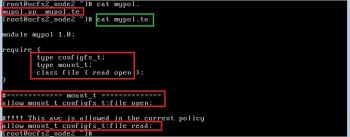
The quick and advanced installation methods require a user that has access to all hosts.

Start and enable docker on both the machines, systemctl enable docker & systemctl start docker Then run docker-storage-setup and review the output to ensure the docker-pool volume was created: docker-storage-setup vi /etc/sysconfig/docker-storage-setup DEVS=sdb VG=docker-vg yum install docker-1.12.6 -yĬonfigure a dedicated partition or hard disk on both the machines in my case it is sdb. You should install Docker 1.12.6 on all master and node hosts. Install dnsmasq and bind-utils on both the machines, yum install dnsmasq bind-utils -yĮdit the /etc/nf file on both the machines and two entries should look like below, vi /etc/nf address=//10.160.0.2 resolv-file=/etc/resolv.dnsmasq create /etc/resolv.dnsmasq file in both the machines and make entry like below, vi /etc/resolv.dnsmasq 8.8.8.8Įnable and restart dnsmasq on both the machines, systemctl restart dnsmasq & systemctl enable dnsmasqĭisable and stop firewalld on both the machines, systemctl stop firewalld & systemctl disable firewalld


rebootĮdit your both the machines nf and entry should look like below, vi /etc/nf search nameserver 127.0.0.1 Then do system update: yum repolist yum updateĪfter update reboot both of your machine. Take a pool id of below,30 Day Self-Supported Red Hat OpenShift Container Platform, 2-Core Evaluation30 Day Red Hat Enterprise Linux Server Self-Supported Evaluation subscription-manager attach -pool=8a85f98c601232d90160125e9c28041 subscription-manager attach -pool=8a85f98c600b1aeb01600b48068608f3 subscription-manager repos -enable="rhel-7-server-rpms" \ -enable="rhel-7-server-extras-rpms" \ -enable="rhel-7-server-ose-3.6-rpms" \ -enable="rhel-7-fast-datapath-rpms" Register both the machines with your Red Hat subscription: subscription-manager register # vi /etc/hosts 10.160.0.2 master 10.160.0.3 node1Įdit hosts files, # vi /etc/hostname įor Node: # vi /etc/hostname Host file should like below on both the machines. SELinux should be enforcing and targeted mode. One 20GB of extra hard-disk attached to the node.(You can use 2 GB for testing Environment.) One 20GB of extra hard-disk attached to the master node.

20 GB of minimum disk size for the testing environment.(You can use 4 GB for testing Environment.) (You can use 1 CPU for testing Environment.) Base OS: RHEL 7.3 or 7.4 with the “Minimal” installation.You must have an active OpenShift Container Platform subscription on your Red Hat account to proceed.


 0 kommentar(er)
0 kommentar(er)
